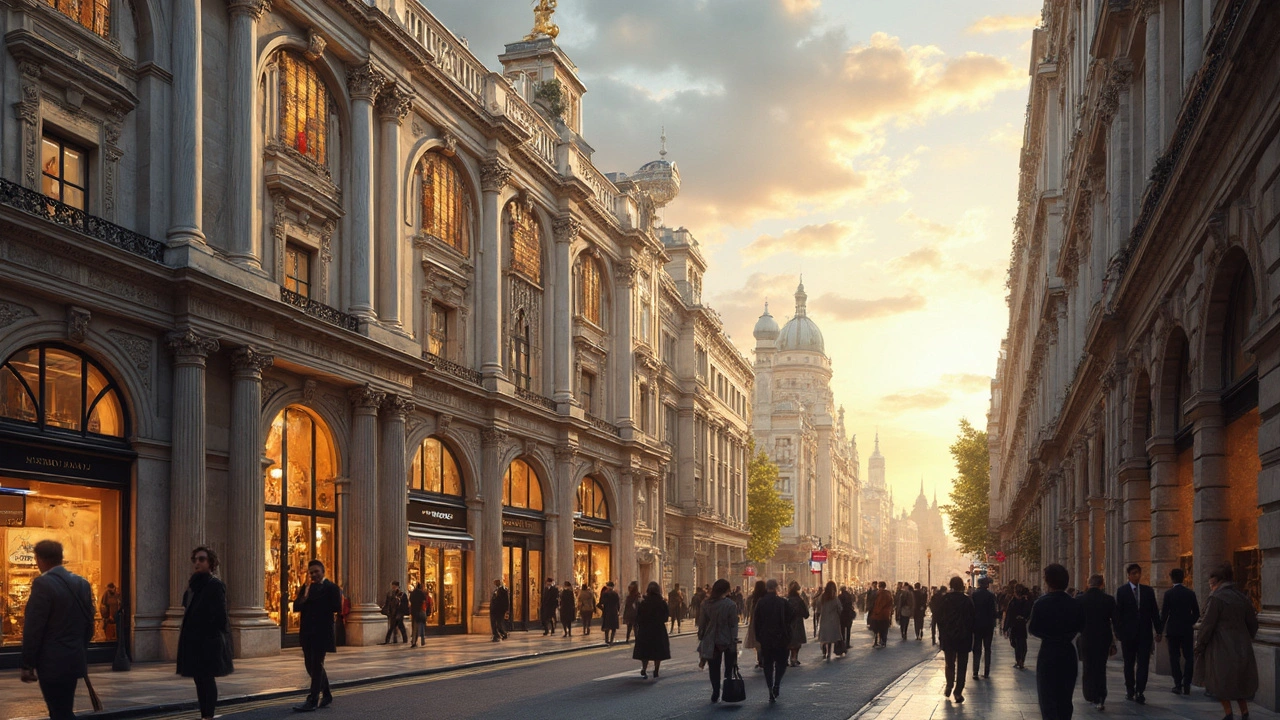Baroque architecture, with its drama and bold forms, isn't just a relic of the past—it still inspires buildings and cities today. This article explores how the style’s curves, grand entrances, and eye-catching details influence modern malls, churches, offices, and even everyday homes. You'll see how designers borrow from Baroque to make buildings memorable and functional in our fast-paced world. We’ll break down iconic features and how you spot them in your own neighborhood. Plus, there are tips on adding a bit of Baroque style to your own space.
Architecture Influence: Spotting Style and Its Impact
Architecture influence is how past ideas, materials, and cultures show up in the buildings around you. Want to read a city like a book? Start by noticing the basics: arches, columns, glass facades, and ornament. Each detail tells you a short story about technology, taste, and power at the time it was built.
Take Roman engineering: arches and concrete let builders span bigger spaces and created civic buildings that still inspire today. Or look at Beaux‑Arts — grand facades and wide boulevards shaped how public life moved through cities. Those are easy to spot if you know what to look for.
How Historical Styles Keep Reappearing
Styles don’t vanish; they get mixed, reused, and updated. Colonial buildings merged European forms with local materials and crafts—so you’ll often find familiar shapes dressed in local stone or timber. Greek Revival revived classical columns to suggest permanence and democracy. Fast forward: designers borrowed those symbols for government buildings to signal authority, even centuries later.
Modern movements like Bauhaus and High‑Tech flipped the script. Bauhaus stripped ornament and made function visible — simple geometry, flat roofs, honest materials. High‑Tech celebrated structure and systems, showing steel and glass instead of hiding them. These approaches changed how we build offices, airports, and malls today.
Practical Tips: Spot the Influence Fast
Want to recognize influences when you walk around town? Try these simple checks: look at the roofline (flat, pitched, dome), window shape (arched, sash, curtain wall), and materials (brick, stone, concrete, glass). A building with heavy ornament, symmetry, and grand steps? Likely Beaux‑Arts or Baroque influence. Clean lines and simple forms? Lean toward Modern or Bauhaus.
Think about scale and setting too. Neo‑Futurist buildings focus on dynamic shapes and tech-driven forms — they stand out in skylines with bold curves or unusual lighting. Constructivist or Expressionist works often feel theatrical, using dramatic forms to make a political or emotional point.
Why does this matter? Because understanding influence helps you read a place’s history, spot design opportunities in renovation, and make smarter choices if you’re planning a build. Preservation matters: saving a Georgian facade keeps a city’s texture, while smart adaptive reuse can make an old warehouse feel purposeful for modern life.
If you enjoy architecture, start photographing recurring details and comparing them to known styles — you’ll train your eye fast. Want practical inspiration? Look at how Mediterranean Revival uses patios and tiles for climate reasons, or how Mid‑Century Modern brings nature into homes with large glass walls. Those are design lessons you can apply, not just admire.
Architecture influence shapes more than buildings; it shapes how we live, move, and remember. Keep asking: where did this idea come from, and how could it work better today? That question turns a casual walk into a mini design lesson every time.

